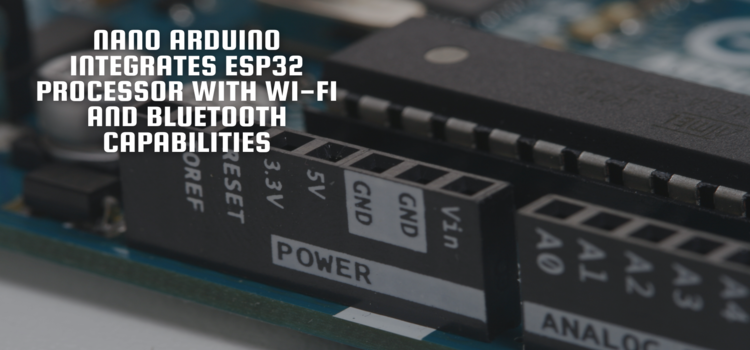Arduino has recently introduced a new board in the Nano shape, equipped with Espressif's ESP32-S3 microcontroller that supports Wi-Fi and Bluetooth LE capabilities. This board is compatible with both the Arduino IDE and MicroPython. The ESP32 is integrated into the board as a NORA-W106-10B module fromlox. It features a 240MHz 32-bit dual-core Xtensa LX7 CPU for processing. In terms of memory, the board includes 8MB of PSRAM, 16MB of flash memory, KB of SRAM, and an additional 16KB of SRAM in the low-power RTC (real-time clock). Within the RTC, 8KB of RAM designated as 'slow' and can be accessed by the ESP32's ULP coprocessor, allowing data retention during deep sleep.
The board comes with a built antenna and operates at a frequency of 2.4GHz. It supports Wi-Fi 4 IEEE 802.11b/g/n with a range of up to 500 meters, while Bluetooth LE is version 5.0 with a maximum data rate of 2Mbps. Arduino states that the board has the capability to scan and advertise simultaneously, as well as support multiple connections in peripheral/central mode for Bluetooth LE. The IO voltage level is 3.3V. It offers eight analog pins (available in RTC mode) and 14 digital pins (including the analog pins, totaling 21 pins). Serial interfaces such as SPI, I2C, I2S, UART, and CAN (TWAI - two-wire automotive interface) can share these pins.
Power can be supplied to the board in three ways: 3.3V via pins, 5V through its USB-C connector, or 6-21V via pins. Unfortunately, Arduino has not provided active power consumption details on its datasheet. However, according to the uBlox datasheet, the module consumes 286mA during Wi-Fi transmission (802.11n HT20, 16.5dBm, 100% duty cycle) and 220mA during Bluetooth Low Energy operation (0dBm, 100% duty cycle). Arduino does provide power consumption figures for sleep modes: 240μA for light sleep and 7μA for deep sleep mode. It's important to note that these figures are module-specific and not specific the board itself, although this is not explicitly stated in the Arduino datasheet. The operating temperature range for the board is -40 to +85°C.
